Dear Young Woman Considering a Career in Surgery,
It was lovely to meet you the other day. Many times a month, a young woman just like you comes to me with similar interests and concerns. “I really love surgery,” she says, ” But I am afraid of the lifestyle and I really want to have a family.”
Oh, and thank you for also inviting me to speak at your seminar the other day on Women in Traditionally Male Dominated Fields. I have been speaking at similar panel sessions since 2005 when I was a bit of a novelty at my training program as a clinical PGY-4 with an infant daughter. Your collective curiosity on what my life must be like is of great interest to me because to me it’s just my life. It’s the only reality that I know because, like you, I was young (just a few days into my 25th year, just 5 days into my first ever surgical rotation) when it occurred to me that I really loved surgery. It was unexpected; but every day since then (from the remainder of that MS3 rotation, to my sub-internships, to my years in residency, to research and clinical fellowships, and to these past 6 years on staff) I have crafted a reality, as tenuous as it is, that works for me and my family in any given moment in time.
And I am here to tell you that you can do the same too if you, in your heart of hearts, can think of nothing more exciting than surgery as your professional passion.
People outside of surgery will tell you that it’s a career that is too hard to integrate with family life. They are correct that it is generally harder than other fields in medicine; but, ask yourself if you truly want a career in general pediatrics, or dermatology, or invasive cardiology or anything in between. If the answer for whatever alternate field(s) you are considering is no, then no matter how many fewer hours your profession requires, no matter how much more flexible those hours may be, your family will be left with a present, well-rested, yet bitter wife and mother.
[NB: I use the word integrate very purposefully here. Anyone from a demanding profession, surgery or otherwise, who tells you that work-life balance is possible is conning you. Your life will never be in balance. Something will always have to give: your work, your family, or yourself. It’s in how you integrate these things in a shifting, fluid professional and personal lifetime that you will craft your own reality.]
The same can be said of those who encourage you to enter surgery training but then offer that you may consider a career in breast surgery or start an exclusive vein clinic or choose some other presumably less time sensitive and/or less time consuming surgical practice to balance your professional work with your desire to have a family. Again, ask yourself if you can truly be happy in such a practice. (I personally would be bored with only a few kinds of procedures in my armamentarium and the absence of physiologic chaos; but everyone is different.) You may not know the answer until you are well into your training; but, choosing a medical specialty in the first place, or a surgical subspecialty in the second, simply because you presume it will be easier for family life is fraught with potential for professional dissatisfaction. I promise you that professional dissatisfaction will always stand in the way of overall family life satisfaction. Always. Forever.
Finally, as hard as it might be to envision yourself as a surgeon who wants hobbies, and a spouse, and a smoking hot body, and children of your own someday, remind yourself that divorced parents, widowed parents, disabled parents, parents with deployed military spouses, and parents with far fewer socio-economic resources than practicing surgeons, and trainees for that matter, somehow get it done. Every life has it’s particular challenges when it comes to parenting but surely being a surgeon is not the most insurmountable of them all.
So think long and hard about alternatives to surgery; but choose one only if it speaks to your professional soul. No matter what career you choose, you will likely spend more time at work than on any other aspect of your life be it parenting, self-care, love-making, you name it. Therefore, it is critically important that your choice of career light the fire in your belly to show up every day leaving behind, at least temporarily, everything else including your children. Because one thing is for sure: when you are practicing surgery, your head needs to be in the game. You cannot be distracted by guilt about not being with your family or about delegating some of the more mundane aspects of childrearing or homemaking to others. You must love the work enough to drop the guilt and create practical solutions to raise your children and provide them with a safe and loving space in which to grow while reimagining whatever stereotypes you hold about being the perfect parent.
Because you know what: There is no such thing as a perfect parent, surgeon or otherwise. So there will never be any point in beating yourself up about it. Know that you will love your children more than you could have ever imagined loving anything, including surgery, but that you will still be a great surgeon. The two are not incompatible, but it takes some effort and creativity.
So, now that I have convinced you to choose the career of your dreams here are some thoughts on the effort and creativity it will require.
Do not underestimate the importance of choosing a life partner who gets the soul inspiring nature of your career choice. He/She may be another surgeon, or physician in another specialty, or a non-medical professional, or a skilled laborer; it doesn’t matter as long as your life partner understands that, when you are tired from the long days and nights, or sorrowful for the lost lives, or otherwise distracted, it is not because you love work more than you love them. Bottom line: as awesome as any career may be there is something messed up about your priorities if you really would choose work over loved ones. So your life partner needs to get that you aren’t messed up; you just have a demanding career.
With the demands of that career comes the need for a real partnership in planning life. That doesn’t mean a 50:50 split or a 80:20 split or anything conscribed; it means a constant openness to splitting however it needs to be split or not splitting at all to ensure that life outside of work happens. It means making the most of precious few waking moments together through physical contact and communication. It means having a very user friendly calendar/shared to-do system. It means providing feedback without judgment for the practical things in life and making space for shared emotional and spiritual needs. If you find yourself paired up with someone who can’t work with you on life this way, then consider dumping him/her. Seriously, it’s not worth trying to make them happy if they just don’t get this hugely important part of what makes you whole.
[NB: If a life partner is not your thing or things just don’t work out, that’s okay. The same principles of reimagining, outsourcing, and dropping the guilt apply. It’s just that your village, or metropolis as may be the case for some surgeons, has a different population structure.]
Choose your job based on both professional and personal needs. Training is finite and there is always an end from which to take on a new direction. However, even though many surgeons change jobs, think of your job as your forever job so you don’t accept a situation which will turn out to be toxic for you. Choose partners who will have your back, and you, in turn need to be willing to have theirs. Choose geography that at least satisfies some of your desires for commute time, distance from extended family, lifestyle, weather, etc. and makes life easier. You can’t blame surgery if your long commute destroys your soul, or if having your parents thousands of miles away makes you sad, or if humidity, piles of snow, or whatever your most dreaded weather phenomenon is drives you crazy, or if it takes a flight to get to your favorite past time of hiking, biking, skiing, etc. That’s on you and the choices you have made as a surgeon and not on the profession itself. Finally, choose a practice type and setting that will make you excited to show up every day (for me it was research, teaching, and a level 1 trauma center in a university based system).
If you do have a life partner and working is important to him/her, don’t pick a location that will railroad his/her career. As much as being a surgeon defines you, your soul mate is similarly defined. Please don’t create a situation where he/she will be susceptible to resentment about having his/her professional goals squashed. (I’ve been there. It puts a real strain on a marriage. It sucks.) It’s already hard enough to be paired up with you, a surgeon. Both your jobs may be equally demanding, or one may be more demanding; it doesn’t matter as long as together you negotiate a mutually satisfying life-long give and take about who prioritizes what and when depending on the stages of your respective careers and the ever evolving needs of your family.
When is comes to family, do not waste too much mental effort over-thinking when you should start it. Fertility, along with finding the right person with whom to test your fertility, is a complex and unpredictable thing. No pregnancy is guaranteed to proceed smoothly. Given these inherent limitations and unknowns, along with the demands of a surgical career, there is no perfect time to start a family. This is about as certain as death and taxes. I will spare you the perceived pros and cons to having children during training compared to while in practice. Just know that every time period poses challenges and every passing year makes infertility more likely; so if you are ready in your personal life to try to get pregnant go for it; because, if you choose to wait for a perfect time, you will be waiting for a very, very long time.
And, if having children in a traditional sense is not possible for whatever reason, there is also no perfect time for assisted reproduction, adoption, or surrogacy either even though the salary increase a staff surgeon or faculty job may be necessary for these options. In the end, whatever approach to becoming a parent will be required, you will figure out a way to get through the challenges because you will have mentally and emotionally committed yourself to the idea of being a mother who also happens to be a surgeon.
[NB: If you choose to not have children-by this I really mean choose as there are myriad other mishaps of life and physiology that prevent women who want to be mothers from becoming mothers-, please do not make that choice simply because you want to succeed as a surgeon. You will never forgive yourself. Not ever.]
When it comes to family there are various options to manage childrearing and homemaking. A nanny, two nannies, an au pair, daycare, a nearby grandparent, a neighbor who is a stay-at-home parent, or various combinations of these may be required to keep your children loved and safe. It’s different for every family and I promise you that you will find what works for you. It will be a source of stress but it is doable. And, no matter how much time others spend rearing your children on your behalf, those kids somehow know that your are their mother, that you love them in a way beyond any other love, that you would give your own life if it would save them, and that you also happen to be a busy surgeon. Trust me. They will. And, they will be really proud of the uniqueness of their surgeon mom. They really will.
When it comes to your home, be it your 600 sqft rental in residency or your 2500 sqft grown up home in a cul de sac, outsource any jobs you and/or your partner simply do not enjoy. I cannot emphasize this enough. You will, in fact, have precious little time with your family. Ask yourself how you want to spend that time. Do you want to being cleaning and doing laundry? Or do you want to plan a family outing? If hopping on your John Deere and showing your lawn whose boss on your Saturday off is a fun activity for you, then by all means go for it, otherwise someone else will be happy to mow your lawn for a fee. If you love cooking, knock yourself out planning, shopping for, and preparing gourmet meals along with the associated clean up, but if you don’t then find a meal service. You get the point. If you don’t love it and it can be done by someone else outsource it. Even on a trainee’s budget you should strive to rid yourself of any household obligations you abhor. (For me the $55 spent every other week during residency for cleaning was well worth never having to spend a day off cleaning a toilet and now the extra hours we pay our nanny to do all of our laundry has spared me a monthly power weekend of washing and folding 10 loads of laundry because we just could not get to it all with the many kids’ activities, call nights, etc. that prevent daily washing.)
Remember: as little time as you will have at home to spend with family, you must also prioritize time for yourself. Don’t expect it to just happen. Just as you schedule elective OR cases, you must schedule elective you time. It may not happen very often but if you don’t take the time for self care in the midst of the stresses of the job and the stresses of parenting you will be cranky and miserable to be around. How you spend time away from family when you have so little time with them will change over time and you may even develop hobbies incorporating your family (we have taken to family bike rides and kayaking trips as the kids have gotten older to combine wellness with family time) but remember to schedule things that feel completely selfish to you. A girls’ night, date night, a pedicure, reading a trashy novel, going to a Zumba class during bath/bedtime, or whatever you enjoy is totally not selfish but you will feel that way; so a good barometer for whether or not you are making time for self care is how selfish it feels. My advice is feel selfish at least once a month.
[NB: If your selfish thing is not a fitness thing then you have to also figure out how to fit that in because your patients and your family need you to be healthy.]
Being a surgeon is not incompatible with being a good wife, mother, athlete, whatever else; it’s just trickier. But, if young women keep being scared away from surgical careers then these same fears will linger generation after generation; we will never achieve a critical mass of women surgeons in the profession who can set good examples for one another and for future surgeons. With the same focus we apply in the OR and the same organization we bring to rounds and the same compassion we bring to patient encounters, we can create a life strategy that overcomes these perceived barriers for both a happy family life and a successful surgical career. The barriers will change depending on the stage of the career you love so much and the needs, wants, and development of what and who you love outside of work; but, take it from this surgeon mom: they are barriers to be overcome, not shied away from.
I am pretty sure that’s why you showed up at my door and asked me to that seminar, to make what seems impossible to you at the moment seem possible. Let me tell you: if I can do it, you can too. Go forth, be a surgeon, be a wife, be a mom, be good to yourself and craft a reality that works for you. Then, pay it forward so that someday these meetings and seminars might be rendered obsolete.
Sincerely,
@surgeoninheels
Not just a token surgeon-mom-wife-runner
PS. Here is some inspiration. Your potential in surgery is limitless. https://www.womensurgeons.org/in-practice/leaders-in-surgery/
PPS. The Association of Women Surgeons is an invaluable professional organization whose goal is to: ENGAGE current and future women surgeons to realize their professional and personal goals. EMPOWER women to succeed. EXCEL in those aspirations through mentorship, education and a networking community that promotes their contributions and achievements as students, surgeons and leaders. https://www.womensurgeons.org/
PPPS. I have been fortunate for the last 10+ years to be a part of the American College of Surgeons Women in Surgery Committee working towards improved gender parity, opportunities for professional development, and better work life integration in our careers. https://www.facs.org/about-acs/governance/acs-committees/women-in-surgery-committee















 mba toning you use a double sided maraca thingy and who doesn’t love that–like shaking a martini without the alcohol and calories but the dancing leaves you buzzed in a calorie deficit.) Also, as if channeling your childhood aspirations there are cool Retro 80s Zumba parties (Seriously, if this isn’t s sign what is?!?). You can see how the
mba toning you use a double sided maraca thingy and who doesn’t love that–like shaking a martini without the alcohol and calories but the dancing leaves you buzzed in a calorie deficit.) Also, as if channeling your childhood aspirations there are cool Retro 80s Zumba parties (Seriously, if this isn’t s sign what is?!?). You can see how the 









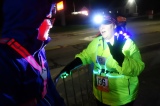








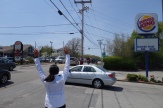





























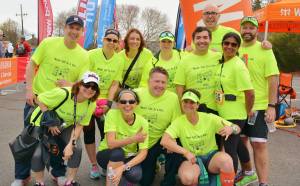






 I used to hoard Costco size cases of these because I would take several on each trip as the original one inevitably failed. I now travel with a
I used to hoard Costco size cases of these because I would take several on each trip as the original one inevitably failed. I now travel with a 


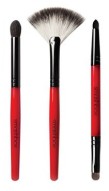
 will work if applied with crappy brushes. I have found the perfect set of travel brushes in the
will work if applied with crappy brushes. I have found the perfect set of travel brushes in the 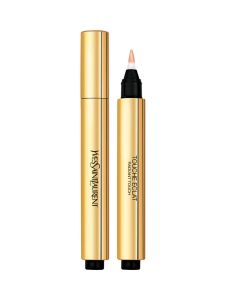

 n the plane when compressed. I got my
n the plane when compressed. I got my  I love my heels for non-scrubs work attire and since I always workout when I travel a also bring a pair of cool kicks with me. For years, I would just throw on the sneakers for rambling through the terminal. Quite frankly, while I am totally embracing the sporty chic look on my weekends at home, I have decided that sneakers with quasi-professional travel attire is not the look I am going for. So now, I travel in my
I love my heels for non-scrubs work attire and since I always workout when I travel a also bring a pair of cool kicks with me. For years, I would just throw on the sneakers for rambling through the terminal. Quite frankly, while I am totally embracing the sporty chic look on my weekends at home, I have decided that sneakers with quasi-professional travel attire is not the look I am going for. So now, I travel in my  I fly coach (I am in academic medicine after all). While lots of professionals travel clad head to toe in the suits/dresses they are intending to wear on the other end, I just won’t subject myself to that kind of discomfort. But, keeping the blazer or cardigan out of the luggage is a huge space saver. I used to travel in jeans but honestly I am just not in love with that look (though lots of men pull of jeans, button down, and blazer with aplomb and I don’t begrudge that eye candy). I have found that Athleta’s
I fly coach (I am in academic medicine after all). While lots of professionals travel clad head to toe in the suits/dresses they are intending to wear on the other end, I just won’t subject myself to that kind of discomfort. But, keeping the blazer or cardigan out of the luggage is a huge space saver. I used to travel in jeans but honestly I am just not in love with that look (though lots of men pull of jeans, button down, and blazer with aplomb and I don’t begrudge that eye candy). I have found that Athleta’s  I have already declared my love for
I have already declared my love for 














